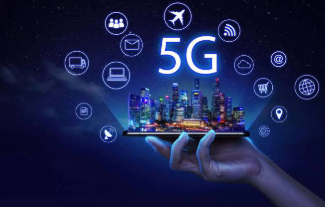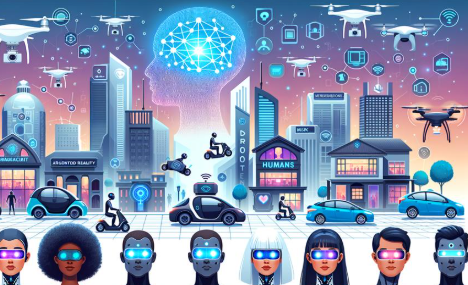The Impact of 5G Technology on Communication and Business
The emergence of 5G technology marks a pivotal shift in communication and business dynamics. Its capacity for ultra-fast data transfer and minimal latency enhances connectivity across devices. This transformation enables real-time collaboration and data-driven decision-making, which are crucial for organizations aiming to thrive in a digital economy. However, the extensive implications of 5G extend beyond mere speed. Several challenges and innovations lie ahead, prompting a closer examination of its broader impact on various industries.
Understanding 5G Technology: Key Features and Benefits
As the fifth generation of wireless technology, 5G represents a significant advancement over its predecessors, offering enhanced speed, reduced latency, and greater connectivity. This new paradigm shifts focus towards a more robust network infrastructure, capable of supporting a multitude of devices simultaneously.
However, with these advancements come critical concerns regarding 5G security. The complexity of 5G networks introduces vulnerabilities that require stringent measures to protect data integrity and user privacy. Enhanced encryption protocols and decentralized architecture are essential to mitigate risks associated with increased connectivity.
Moreover, the potential for IoT expansion underlines the necessity for secure communication channels. Understanding these key features and their implications is vital for harnessing the freedom that 5G technology promises while ensuring a secure digital environment for users.
Read more: Beginner’s Guide to Understanding Blockchain and Cryptocurrency
Transforming Communication: Enhanced Connectivity and Speed
The advent of 5G technology signifies a pivotal shift in communication infrastructure, characterized by ultra-fast data transfer rates that far exceed previous generations.
This enhancement not only facilitates seamless connectivity among an increasing number of devices but also supports the burgeoning Internet of Things (IoT), enabling real-time data exchange.
As a result, the potential for innovation across various sectors, including healthcare and transportation, is significantly amplified.
Ultra-Fast Data Transfer
While traditional mobile networks struggled with latency and data transfer speeds, the advent of 5G technology has fundamentally redefined communication by enabling ultra-fast data transfer.
This enhancement allows for ultra-fast streaming of high-definition content, significantly improving user experiences across various platforms. Businesses can now leverage high-speed downloads to facilitate real-time data sharing, fostering collaboration and innovation.
The increased bandwidth and reduced latency empower applications such as cloud computing and the Internet of Things (IoT), creating a more interconnected environment.
Moreover, industries stand to benefit from enhanced operational efficiencies and streamlined communication channels. As organizations adapt to this transformative technology, the potential for growth and increased productivity becomes more attainable, ultimately granting users greater freedom and flexibility in their digital interactions.
Seamless Device Connectivity
Building upon the advancements in ultra-fast data transfer, 5G technology introduces seamless device connectivity, significantly enhancing communication capabilities.
This evolution facilitates smart home integration and IoT advancements, enabling disparate devices to communicate efficiently and respond to user commands in real-time.
Additionally, connected vehicles benefit from robust networks, supporting features like real-time navigation and safety alerts.
Wearable technology thrives in this ecosystem, delivering instantaneous health data and notifications.
Furthermore, augmented and virtual reality applications flourish, providing immersive experiences that meet rising consumer expectations.
However, as connectivity expands, network security becomes paramount, necessitating robust measures to protect user data.
Ultimately, 5G’s impact on seamless device connectivity redefines the landscape of communication, fostering an interconnected environment that empowers users.
Revolutionizing Remote Work: Collaboration in a 5G World
As organizations adapt to an increasingly digital landscape, 5G technology emerges as a pivotal force in transforming remote work dynamics.
The enhanced bandwidth and reduced latency associated with 5G enable seamless communication among remote teams, significantly improving the efficacy of virtual collaboration tools. Employees can engage in high-definition video conferences without lag, share large files instantaneously, and utilize augmented reality applications for immersive teamwork.
This technological leap not only fosters a more connected workforce but also enhances productivity and creativity by allowing teams to collaborate in real-time from diverse locations.
Consequently, 5G technology redefines the parameters of remote work, offering unparalleled flexibility and autonomy, and empowering organizations to harness the full potential of their distributed talent.
Data-Driven Decision Making: Real-Time Insights and Analytics
The advent of 5G technology significantly enhances data collection methods, enabling businesses to gather vast amounts of information with unprecedented efficiency.
Coupled with accelerated analytics processing speeds, organizations can convert raw data into actionable insights almost instantaneously.
This synergy not only facilitates informed strategic business decisions but also positions companies to respond dynamically to market changes and consumer demands.
Enhanced Data Collection Methods
5G technology revolutionizes data collection methods, enabling organizations to harness real-time insights and analytics with unprecedented efficiency.
The integration of smart sensors into various environments allows for continuous data gathering, offering a rich tapestry of information that can be analyzed instantaneously. This capability empowers businesses to employ predictive analytics, transforming raw data into actionable intelligence.
By utilizing vast amounts of information collected from diverse sources, organizations can anticipate trends, optimize operations, and enhance customer experiences with remarkable precision.
The immediacy and reliability of data derived from 5G-enabled systems facilitate informed decision-making, fostering an ecosystem where agility and responsiveness are paramount.
Ultimately, this evolution in data collection signifies a pivotal shift towards a more data-driven, liberated approach to business strategy.
Accelerated Analytics Processing Speed
While traditional data processing methods often introduce delays that hinder timely decision-making, the advent of accelerated analytics processing speed, driven by 5G technology, fundamentally transforms this landscape.
This enhancement enables organizations to integrate analytics more seamlessly across various platforms, facilitating real-time insights that were previously unattainable. With accelerated processing capabilities, businesses can harness vast amounts of data instantaneously, allowing for swift adjustments in strategy and operations.
The integration of analytics becomes more robust, empowering stakeholders to make data-driven decisions with greater confidence. As a result, organizations experience improved agility and responsiveness in an increasingly dynamic market, fostering an environment where informed decisions can thrive and flourish, ultimately promoting freedom in innovation and strategic exploration.
Informed Strategic Business Decisions
Accelerated analytics processing speed has set the stage for informed strategic business decisions, enabling organizations to leverage real-time insights and analytics effectively.
With 5G technology, businesses can access vast data streams instantaneously, facilitating strategic forecasting that is both timely and accurate. This capability empowers companies to analyze market trends, consumer behaviors, and operational efficiencies in real time, fostering a proactive approach to decision-making.
By harnessing these insights, organizations can identify opportunities and mitigate risks, ultimately gaining a competitive advantage in a rapidly evolving marketplace.
The ability to make data-driven decisions enhances organizational agility, allowing firms to adapt swiftly to changes and innovate continuously, thus securing their position as market leaders in an increasingly data-centric business environment.
Innovations and Applications: Industries Transformed by 5G
As industries increasingly adopt advanced telecommunications technologies, the transformative impact of 5G is becoming evident across various sectors.
The emergence of Smart Cities exemplifies how 5G facilitates interconnected urban infrastructure, enhancing public services and resource management.
In healthcare, innovations such as remote surgeries and real-time patient monitoring are revolutionizing care delivery, increasing accessibility and efficiency.
Automotive advancements, particularly in autonomous vehicles, leverage 5G’s low latency for improved safety and navigation.
Retail transformation is marked by enhanced customer experiences through augmented reality and seamless transactions, driven by robust connectivity.
Finally, agricultural efficiency is optimized through precision farming techniques, enabled by real-time data analytics.
Collectively, these innovations underscore 5G’s pivotal role in reshaping industry landscapes and fostering unprecedented growth opportunities.
Challenges and Considerations: Navigating the 5G Landscape
The rapid deployment of 5G technology brings with it a host of challenges that stakeholders must address to fully realize its potential.
Network security remains a paramount concern, as increased connectivity heightens vulnerability to cyber threats.
Additionally, infrastructure costs pose significant barriers, with extensive investments needed for new hardware and software.
Regulatory hurdles complicate spectrum allocation, often delaying deployment timelines.
Public perception, influenced by privacy concerns and misunderstandings about 5G’s implications, can hinder acceptance.
Furthermore, ensuring technological compatibility across devices and networks is essential to avoid fragmentation.
Addressing these multifaceted challenges will require collaboration among governments, businesses, and consumers, fostering an environment that balances innovation with the safeguarding of interests in the increasingly complex 5G landscape.
Conclusion
In conclusion, the profound potential of 5G technology propels pivotal progress across communication and commerce. By promoting potent partnerships, enhancing efficiency, and enabling instantaneous insights, 5G serves as a cornerstone for contemporary connectivity. However, navigating the nuanced networks and challenges of this revolutionary technology requires strategic foresight and adaptability. As businesses embrace the 5G paradigm, they must prioritize preparedness and proactive planning to harness the full spectrum of advantages offered by this transformative technological tide.




